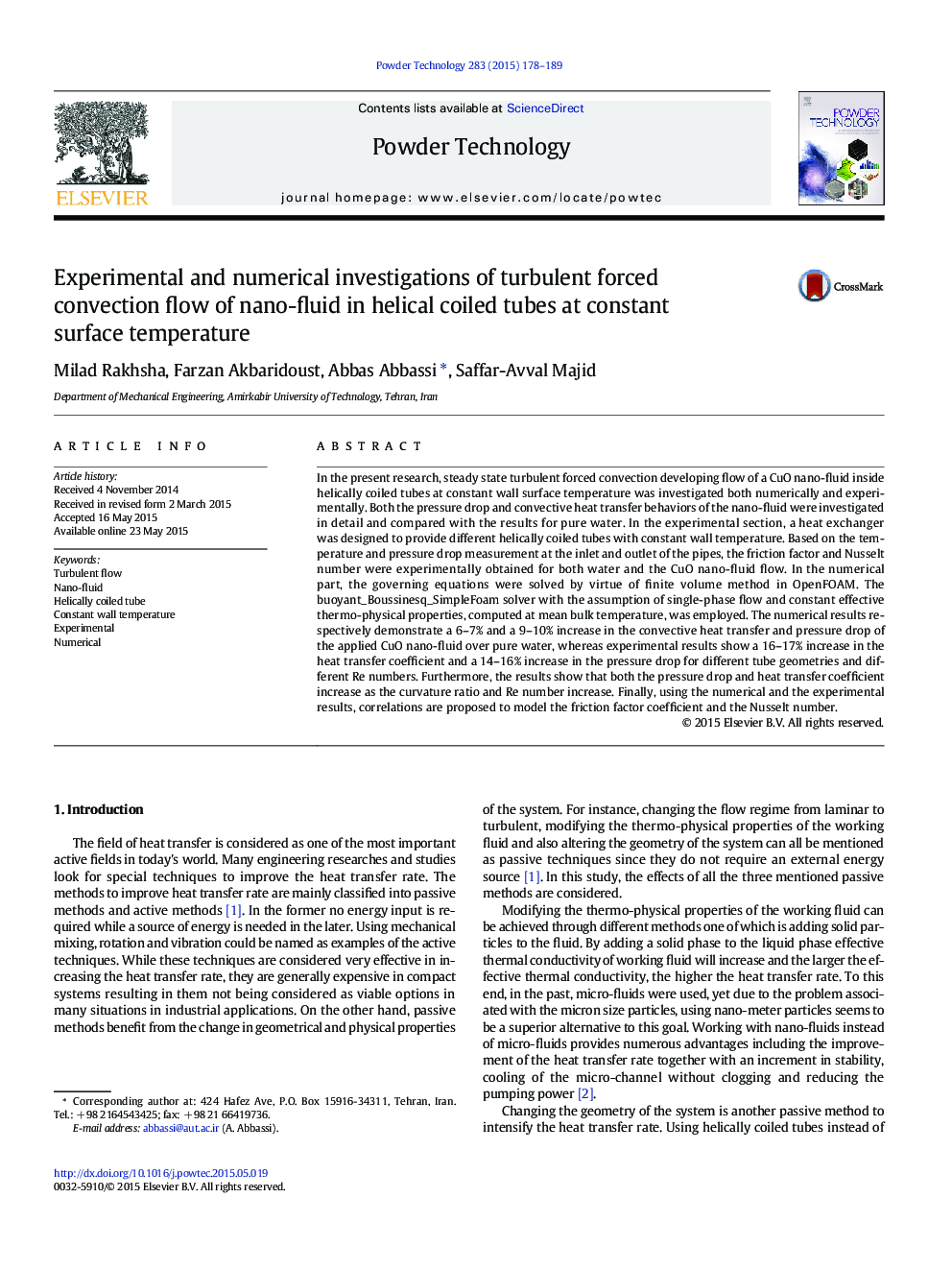| کد مقاله | کد نشریه | سال انتشار | مقاله انگلیسی | نسخه تمام متن |
|---|---|---|---|---|
| 235405 | 465635 | 2015 | 12 صفحه PDF | دانلود رایگان |
• Combined use of CuO nano-fluid and helical coils increases heat transfer and pressure drop.
• The presence of the particles close to the outer wall of the tube is increased due to the centrifugal forces.
• Homogeneous model with constant thermo-physical properties underestimates the experiments.
In the present research, steady state turbulent forced convection developing flow of a CuO nano-fluid inside helically coiled tubes at constant wall surface temperature was investigated both numerically and experimentally. Both the pressure drop and convective heat transfer behaviors of the nano-fluid were investigated in detail and compared with the results for pure water. In the experimental section, a heat exchanger was designed to provide different helically coiled tubes with constant wall temperature. Based on the temperature and pressure drop measurement at the inlet and outlet of the pipes, the friction factor and Nusselt number were experimentally obtained for both water and the CuO nano-fluid flow. In the numerical part, the governing equations were solved by virtue of finite volume method in OpenFOAM. The buoyant_Boussinesq_SimpleFoam solver with the assumption of single-phase flow and constant effective thermo-physical properties, computed at mean bulk temperature, was employed. The numerical results respectively demonstrate a 6–7% and a 9–10% increase in the convective heat transfer and pressure drop of the applied CuO nano-fluid over pure water, whereas experimental results show a 16–17% increase in the heat transfer coefficient and a 14–16% increase in the pressure drop for different tube geometries and different Re numbers. Furthermore, the results show that both the pressure drop and heat transfer coefficient increase as the curvature ratio and Re number increase. Finally, using the numerical and the experimental results, correlations are proposed to model the friction factor coefficient and the Nusselt number.
Figure optionsDownload as PowerPoint slide
Journal: Powder Technology - Volume 283, October 2015, Pages 178–189
